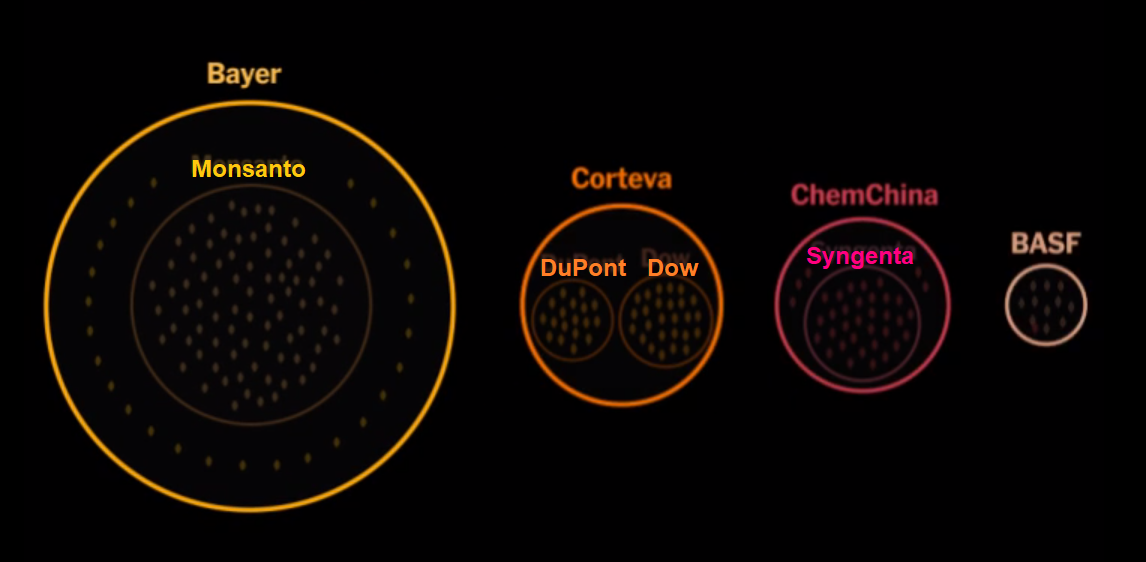- These are the seeds of a revolution.
- Each dot above represents a seed company from the 1990s.
- By 2018, they were all wholly or partly owned by Monsanto, then the largest seed producer in the world.
- Last year, Monsanto was acquired by the German conglomerate Bayer, making it the world’s biggest agrochemical and seed company.
- Today, just four giant companies (Bayer, Corteva, ChemChina, BASF) control more than 60 percent of all the world’s seed sales.

Save Our Food. Free the Seed.
By Dan Barber
Additional reporting and graphics by Ash Ngu
Photographs by Ruth Fremson
https://www.nytimes.com/interactive/2019/06/07/opinion/sunday/dan-barber-seed-companies.html?module=inline
Not long ago I was sitting in a combine tractor on a 24,000-acre farm in Dazey, N.D. The expanse of the landscape — endless rows of corn and soybeans as precise as a Soviet military parade — was difficult to ignore. So were the skyscraper-tall storage silos and the phalanx of 18-wheeled trucks ready to transport the grain. And yet what held my attention were the couple of dozen seeds in my palm — the same seeds cultivated all around me.
We are told that everything begins with seed. Everything ends with it, too. As a chef I can tell you that your meal will be incalculably more delicious if I’m cooking with good ingredients. But until that afternoon I’d rarely considered how seed influences — determines, really — not only the beginning and the end of the food chain, but also every link in between.
The tens of thousands of rows surrounding me owed their brigade-like uniformity to the operating instructions embedded in the seed. That uniformity allows for large-scale monoculture, which in turn determines the size and model of the combine tractor needed to efficiently harvest such a load. (“Six hundred horsepower — needs a half-mile just to turn her around,” joked the farmer sitting next to me.) Satellite information, beamed into the tractor’s computer, makes it possible to farm such an expanse with scientific precision.
The type of seed also dictates the fertilizer, pesticide and fungicide regimen, sold by the same company as part of the package, requiring a particular planter and sprayer (40 feet and 140 feet wide, respectively) and producing a per-acre yield that is startling, and startlingly easy to predict.
It is as if the seed is a toy that comes with a mile-long list of component parts you’re required to purchase to make it function properly.
We think that the behemoths of agribusiness known as Big Food control the food system from up high — distribution, processing and the marketplace muscling everything into position. But really it is the seed that determines the system, not the other way around.
The seeds in my palm optimized the farm for large-scale machinery and chemical regimens; they reduced the need for labor; they elbowed out the competition (formally known as biodiversity). In other words, seeds are a blueprint for how we eat.
We should be alarmed by the current architects.
Just 50 years ago, some 1,000 small and family-owned seed companies were producing and distributing seeds in the United States; by 2009, there were fewer than 100. Thanks to a series of mergers and acquisitions over the last few years, four multinational agrochemical firms — Corteva, ChemChina, Bayer and BASF — now control over 60 percent of global seed sales.